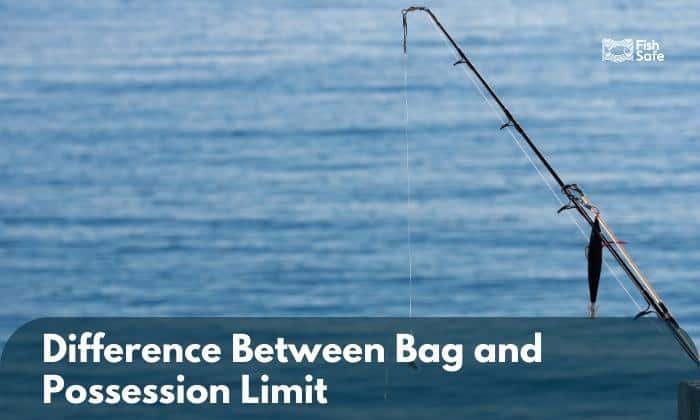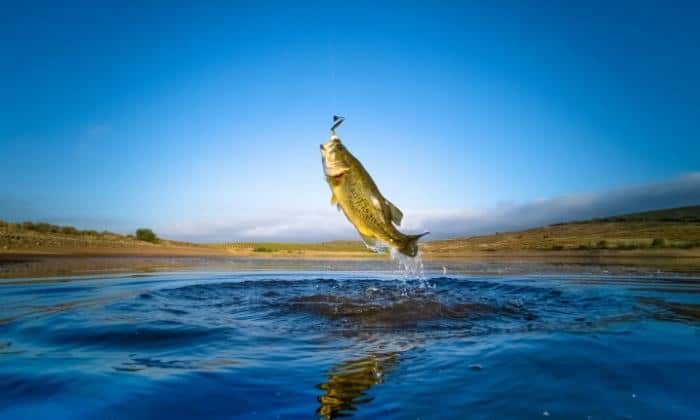You might be one of the people wondering, “Is the bag limit per person or boat the same as the possession limit?” Fishing enthusiasts often encounter terms like “bag limit vs possession limit”, which refers to the number of a single species you can harvest or possess.
These terms can be confusing, especially for beginners. However, it’s essential to understand and adhere to fishing regulations to ensure the sustainability of aquatic ecosystems.
This article will explore the difference between bag and possession limits their importance and provide real-world examples from different species and regions.
Page Contents
What Are Bag and Possession Limits?
Bag and possession limits are vital to fishing regulations to conserve fish populations, sustain aquatic ecosystems, and promote responsible angling. These two terms are pretty similar to each other.
However, there are still differences that we need to address to ensure understanding and compliance with local regulations and contribute to the long-term health of fish stocks.
Consider this analogy to distinguish between these limits: the daily bag limit is like a “catch budget” for a single day, whereas the possession limit is the “total fishing allowance” you can accumulate over time.
The daily bag limit resets with each new day, allowing anglers to catch a fresh set of fish, while the possession limit continues to accrue until it reaches its maximum.
1. Daily Bag Limit Definition
The daily bag or creel limit represents the maximum number of fish caught each day. This limit prevents overfishing by controlling the number of fish of any species harvested during a fishing trip.
The idea behind daily bag limits is to distribute the catch opportunity fairly among anglers while protecting fish populations from excessive exploitation.
For example, if a particular fish species has a daily bag limit of 5, an angler can catch up to 5 of those fish in a single day. Once the angler reaches this limit, they must cease fishing for that species until the next day.
2. Possession Limit Definition
In contrast, the possession limit in fishing pertains to the combined total of fish in your possession at any given time, regardless of when those fish were caught.
Possession limits are put in place to prevent individuals from accumulating excessive catches over time, which could lead to overharvesting and depletion of fish populations.
If the possession limit for a specific species is 10, it means that an angler can have no more than 10 of those fish in their possession, whether they were caught on the same day or over several fishing trips.
Possession limits emphasize the long-term responsibility of anglers to ensure that their cumulative catch remains within sustainable limits.
Fishing Regulations and Quotas
Government agencies, such as state fish and wildlife departments or national fisheries authorities, typically set fishing regulations, including bag and possession limits. These regulations consider various factors and may vary in different states.
1. Alabama
For instance, individuals fishing in Alabama for recreational purposes have the same daily bag and possession limit for some specified species, such as Spotted seatrout, Red drum, and Red snapper.
If you plan to catch red snapper in the state, remember that there is a 2-bag limit per person daily. This means that each angler can catch up to 2 red snapper on a single fishing trip.
Is there an exception?
Indeed, there is a unique exception that applies when participating in an official fishing tournament.
Anglers can keep fish alive during the tournament, even if it exceeds the daily creel limit, given that these fish must be released unharmed on the same day. This exception acknowledges the temporary possession of fish during tournaments without counting them towards the daily bag limit.
2. Texas
In Texas state law governing bag and possession limits for processed fish, individuals possessing valid invoices or sales tickets are exempt from possession limits.
Note that Texas law offers flexibility in bag, possession, and length limits for game and non-game fish.
Possession limits are twice the daily bag limit, but this can vary based on specific regulations. For flounder, however, the possession limit matches the daily bag limit.
Additionally, for guided fishing parties, the bag limit calculation is contingent on the number of individuals on board who are licensed to fish or exempt from holding a license.
3. Oregon
On the other hand, in Oregon, anglers can take daily limits of various fish types, with the possession limit generally set at 3 daily bag limits for all species, except for specific species, including steelhead and adult salmon (no limit), marine invertebrates (2 bags), etc.
It’s important to mention that anglers are restricted to one daily bag limit and one annual bag limit for all fish species taken from the Columbia River, regardless of their licenses in Oregon and Washington.
4. Florida
We are moving on to Florida’s dynamic trout limits, weaving regional distinctions into the fishing experience. The state has set a 5 trout per day in Northeast Florida, while the Central East allows 2 daily from January to October.
Down South, it’s 3 trout per day, with Collier County offering exceptions. Yet, it’s essential to stay vigilant about periodic closures to avoid exceeding the total max getting possessed. The Big Bend permits 5 trout daily, and the Western Panhandle allows 3.
Lastly, if you’re worrying about your fish fillet stock in your refrigerators, note that once you’ve cleaned and frozen your fillets at home, they no longer contribute to your possession limit.
However, it’s still advisable to double-check with a game animal warden for confirmation, especially if the regulations aren’t explicitly clear.
Examples of Bag and Possession Limits
As mentioned earlier, each state has its own set of rules, specifying the maximum number of fish an angler can catch in a single day (daily bag limit) and how many of those fish they can legally possess (possession limit).
So before you go into hunting mode, make sure that you check the fishing regulations in your location.
The table below provides a snapshot of bag and possession limits for various fish species in different states. It highlights the varying regulations in place to manage the conservation of these aquatic resources.
| Fish | State | Daily Bag Limit | Possession Limit |
| Rainbow Trout | California | 5 | 10 |
| Red Snapper | Alabama | 2 | 2 |
| White sturgeon | Oregon | 2 | 6 |
| White Bass | Texas | 25 | 50 |
| Largemouth Bass | Florida | 5 | 5 |
Conclusion
Understanding the points in the argument in possession limit vs bag limit is essential for responsible angling in hunting.
As we conclude our exploration of the difference between bag and possession limits, one thing is abundantly clear: these regulations are not barriers; they are the compass guiding responsible anglers on their fishing journeys.
So, whether casting your line in a peaceful pond, a rushing river, or the boundless ocean, embrace these limits. Always remember to check and comply with local regulations specific to your fishing location to help safeguard our precious marine resources.

Fishing is an important part of my day-to-day life and a wonderful way for me to bond with friends and family. Whether you fish for recreation, competition, or exercise, I hope you find the guides here helpful. Don’t hesitate to drop me a message if you want further help.



